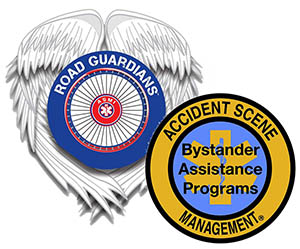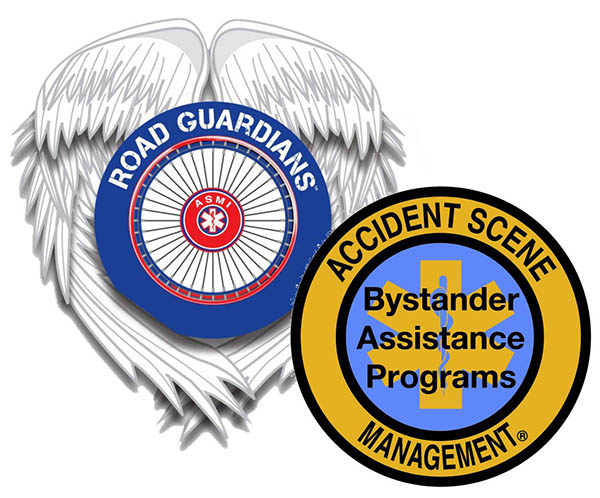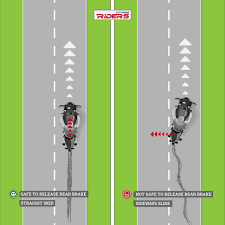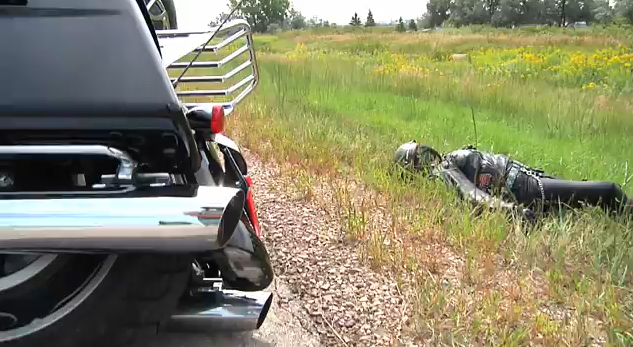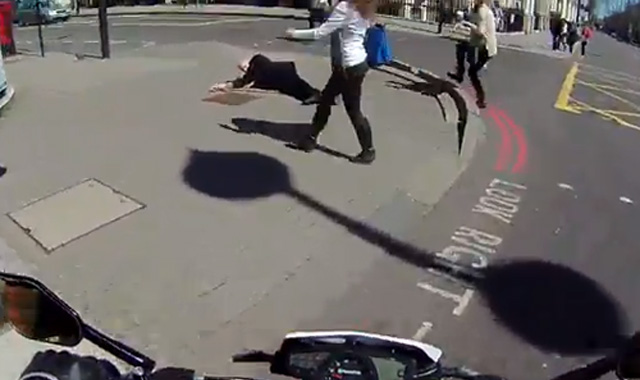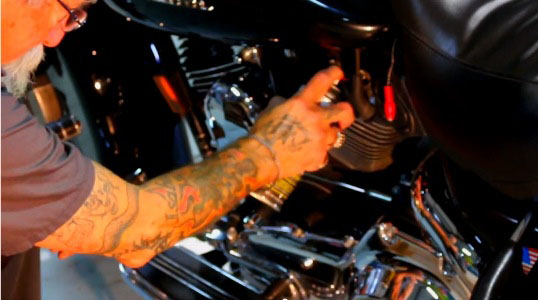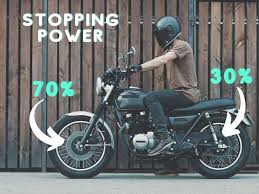
Motorcycle Braking: The Good, The Bad, and The Ugly
This is the second installment of a three part series on Motorcycle Braking. To read the first on Common Braking Errors click HERE. To read the third on How to Practice click HERE.
The basics of maximum braking are to apply both brakes fully without locking (skidding) either tire. Sounds simple enough – but it does take practice. Here is a little more detail for front and rear brake application.
Front brake
-
- Smoothly and firmly – don’t grab, but don’t be shy, either
- With increasing pressure – since the weight shifts forward as you brake and presses more weight onto the front tire, you have increasing available traction. Take advantage of this by smoothly and quickly increasing the amount of your squeeze.
Rear brake
 Apply the rear brake with light to lighter pressure. As stated above, the weight is shifting to the front, so the rear is getting lighter. This means there is a decreasing amount of traction available at the rear tire. To avoid a rear wheel skid, decrease the amount of pressure you are applying to the rear brake.
Apply the rear brake with light to lighter pressure. As stated above, the weight is shifting to the front, so the rear is getting lighter. This means there is a decreasing amount of traction available at the rear tire. To avoid a rear wheel skid, decrease the amount of pressure you are applying to the rear brake.
Handling Skids
No one wants to skid in an emergency situation (if you do, re-read the above section on the consequences of skids!). The bottom line is that skidding gives up control. That may sound extreme, but bear with me and I’ll share my reasoning. Here is my definition of motorcycle control: ‘The ability to control and change the speed and/or direction of your motorcycle.’ A skidding tire (front or rear) takes away your ability to control direction and severely limits your ability to control speed. To regain this control, here is how to respond to skids:
Front wheel skid
-
- Get off the front brake as soon as you can to allow the when to roll again. Once the front wheel is rolling, you have regained steering control.
- Now, whatever was there that caused you to get on the brakes in the first place is very likely still there, so get back on the front brake right away (more smoothly this time) so you can get slowed or stopped.
Rear wheel skid
-
- Get off the rear brake as soon as you can to allow the rear wheel to roll again. It is important to get off the rear brake before the rear of the bike has a chance to fishtail out of alignment. This quick response addresses the risk of a ‘high-side’ crash mentioned above.
- **NOTE** Some motorcycle rider training programs teach the technique listed above (immediately release and reapply), and some teach riders to keep the rear wheel locked all the way to a stop. After over 20 years in the motorcycle rider training business and over 35 years riding, my recommendation is to immediately release and reapply. However, you need to decide for yourself which is best for you. Here is a summary chart of my view of the pros and cons of each.
| Immediately Release And Reapply | Keep it Locked (Skidding) all the Way to a Stop | ||
| Pros | Cons | Pros | Cons |
| Shorter stopping distance | Risk of high-side crash if rider releases the rear brake after the bike fishtails out of alignment |
Minimizes risk of high-side crash by not allowing the rear wheel to resume rolling | Gives up control (the ability to change speed and/or direction) |
| Maintain/regain control (the ability to change speed and/or direction) | May be challenging to think and react that quickly in a ‘panic’ situation | May be more simple to apply this strategy in a ‘panic’ situation | Longer stopping distance |
| Same strategy for handling front wheel skids and rear wheel skids – easier to remember and execute | Risk of low-side crash if bike fishtails out of alignment far enough | ||
| Different strategies for handing front wheel skids and rear wheel skids – may be more challenging to remember and execute |
|||
Written by – Stacey “Ax” Axmaker
Stacey “Ax” Axmaker had his first exposure to motorcycle safety in 1991 when his insurance agent suggested he take a rider training class to get a discount on his premium. He did and was so blown away by what he didn’t know, that he asked how he could be an Instructor. Since that day Ax has ‘served the cause’ in a variety of roles including Instructor, Instructor Trainer, Chair of Idaho’s Strategic Highway Safety Plan Motorcycle Safety Committee, and many more.
